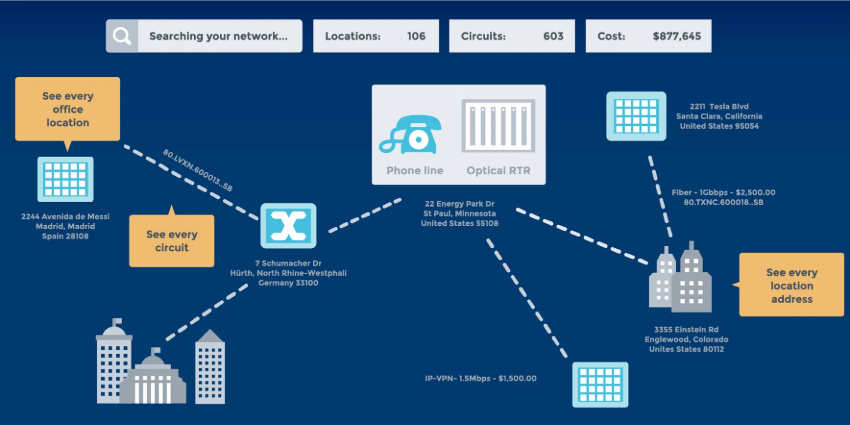We live in the post-digital age. In the UK alone there are almost 50,000 technology companies and almost 2 million people employed in the digital sector. We use more mobile data per head than any other nation, almost 2GB a month each. With everyday technology powering more and more of what we do, from the British Navy’s warships using Siri to tell them who’d fired a missile, to your connected fridge telling you it’s ordered fresh milk.
Yet this picture of a super-connected country is not one experienced across all parts of the UK. For the ‘Digitally Privileged’ we might only be exposed to the other side once or twice a year; on a trip to see a relative in South Wales, at a wedding in West Devon, on a hiking jaunt in North West Scotland, and yes there are smartphone addicts who may experience mild palpitations when unable to upload an Insta post halfway up a mountain, but for most of us we’ll endure that snail-paced broadband feed for a short while, a few of us might even appreciate the ‘Digital Detox’. Yet for the inhabitants of these places (I mention the above as geographies that have access to the least performant connectivity and mobile access methods, but they are not isolated examples – many parts of rural Britain live life in the ‘Digital Slow lane’) the consequences of poor access to telecoms has real consequence.
Much has been written on the so-called ‘Digital Divide’ in recent years, and it’s not simply the divide between rural and urban, but between young and old, and to a degree between rich and poor. What we know with certainty is schools with better access to the latest e-learning tools and digital teaching practices produce pupils better equipped for tomorrows’ economy, that children with substandard connectivity at home have inferior access to learning tools, that businesses with poor local access to Telco services are less likely to realise the full operational and economic potential of new internet-based technologies, and that the areas where said businesses reside will struggle to attract and retain businesses, talent , and investment.
 A problem for those individuals and communities, also a wider problem for the UK and its future; as with ever-sprawling globalisation and an uncertain post-Brexit future on one hand, the increasing unaffordability of parts of London and the South East for young people on the other, it’s never been more important to harness the power of technology and enable companies and individuals to drive growth and enterprise across the whole of the UK. This is exactly why the government investment in super broadband has been forthcoming in recent years (£400 million has committed for a 5 year period from April 2017) and also forms part of the rationale behind the Ofcom’s decision to split BT from its Openreach arm (as a means of providing a more level playing field for other operators and stimulate greater competition).
A problem for those individuals and communities, also a wider problem for the UK and its future; as with ever-sprawling globalisation and an uncertain post-Brexit future on one hand, the increasing unaffordability of parts of London and the South East for young people on the other, it’s never been more important to harness the power of technology and enable companies and individuals to drive growth and enterprise across the whole of the UK. This is exactly why the government investment in super broadband has been forthcoming in recent years (£400 million has committed for a 5 year period from April 2017) and also forms part of the rationale behind the Ofcom’s decision to split BT from its Openreach arm (as a means of providing a more level playing field for other operators and stimulate greater competition).
One of the much heralded success stories of this recent investment is Cornwall’s burgeoning tech hub; the cluster of digital economy firms around the towns of Truro, Redruth, and Camborne have grown 153% since 2011 and rank as the second fastest growing area in the county. The growth has been spurred on by government and EU funds into superfast broadband, which has revolutionised the connectivity infrastructure from one of the poorest in the UK to boasting almost half of the UK’s FTTP (Fibre to the Premises) connections.
The promise of better telecoms in enabling communities to develop new and exciting businesses and sectors is one reason why further progress in this area is so important, another is the way in which it can help very traditional businesses. Agriculture, construction and oil and gas are three sectors where the Internet of Things (IoT) stands to transform existing practices. By connecting people or objects, from the source environment (be it a field, oil rig or construction site) to a remote site there is a myriad of efficiency and safety benefits to take advantage of. This could be anything from wearable technology that allows onsite workers to receive over-the-shoulder coaching from their peers around the world, to drones inspecting oil pipelines or crop fields, through to self-driving tractors and smart hardhats that monitor worker safety. Of course, the other commonality these industries have is that many of their locations are remote or Greenfield and have poor connectivity which makes harnessing this technology to its fullest potential a significant challenge.
 So what can be done to deliver more success stories like the Cornwall example? At the moment the industries I mentioned ‘get by’ with the technologies available to them. To optimise performance, that may consume a variety of services, (potentially blended together) to increase bandwidth or coverage capability, multi-carrier providers, like FluidOne, can be of assistance by offering one point of access to these technologies, but for marked change, the underlying infrastructure in hard to reach locations needs improving.
So what can be done to deliver more success stories like the Cornwall example? At the moment the industries I mentioned ‘get by’ with the technologies available to them. To optimise performance, that may consume a variety of services, (potentially blended together) to increase bandwidth or coverage capability, multi-carrier providers, like FluidOne, can be of assistance by offering one point of access to these technologies, but for marked change, the underlying infrastructure in hard to reach locations needs improving.
The reliance on the private sector to deliver the UK’s connectivity infrastructure helps explain the reasons for our current predicament as the market has quite logically sought to invest in areas with higher concentration of users, particularly domestic users who can also be sold triple or quad play services media services. Since 2009, the Government has begun to provide funding (via the BDUK) but the general consensus within the telco industry is that progress has been inhibited by how the funds have been allocated. The monopoly position afforded to BT and associated reluctance from them to share plans and information, as well as to give access to existing ducting, has left competing providers hamstrung on everything from investment decisions to roll out activities. The good news on this front is that the recent splitting of Openreach from BT, the £10 million government investment in ‘alternative technology pilots’ and the loosening of previously onerous conditions to the Broadband Vouchers scheme in Wales, is evidence that Government is starting to listen to rural communities and the ISP industry and change course.
Here is to more rapid progress over the upcoming years and the closing of the ‘Digital Divide’ allowing for regions, as well as industries with locations in our rural locations, blossoming through the further adoption of digital technologies.
Guest Blog by Max Stoner, Enterprise Sales Manager at FluidOne






